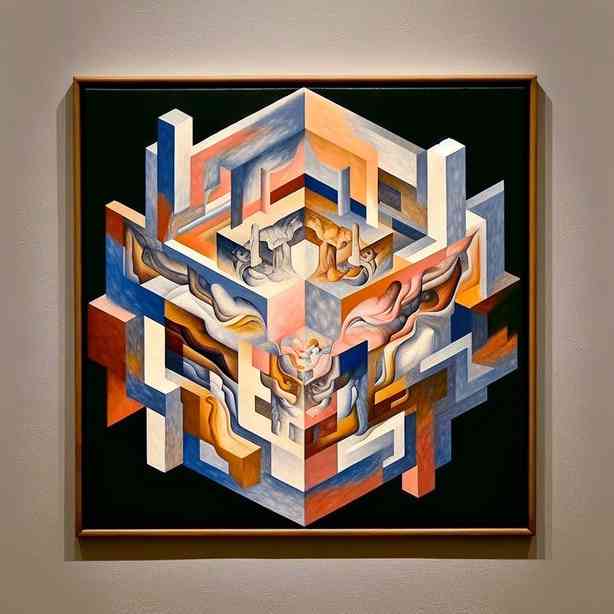
“That Painting That Only Worked Upside Down” refers to a remarkable phenomenon involving a particular artwork that can only be appreciated or understood when viewed in an inverted position. This intriguing concept extends beyond the simple act of viewing art; it invites us to explore the nature of perception, interpretation, and the inherent subjectivity involved in experiencing creative works. The importance of this theme in art cannot be overstated, as it challenges our conventional ways of understanding and interacting with imagery.
The painting in question often alludes to broader themes of perspective, both literally and metaphorically. Artists throughout history have grappled with the limitations of two-dimensional representations and have sought to engage their audience in multiple dimensions. When a painting’s appreciation is predicated on its orientation, it raises essential questions about the relationship between viewer and artwork.
One of the most famous instances of a painting that must be viewed upside down is that of a landscape or abstract work that, when flipped, reveals entirely different images or meanings. This dual nature can elicit a powerful emotional response from the viewer. For example, an innocent portrayal of nature may, when inverted, turn into a haunting representation of chaos. Such a transformative experience not only engages the viewer’s imagination but also prompts them to consider how perspective alters our understanding of reality.
This phenomenon can be likened to the ways in which we confront difficult truths in our lives. Just as the inversion of the painting forces us to see something new, so too do our challenges push us to view our lives from a different angle. Therefore, engaging with this artwork can serve as a metaphor for self-reflection and exploration. It encourages individuals to challenge their preconceived notions, fostering a broader conversation about art as a vehicle for understanding life and our place in it.
Furthermore, this painting embodies the essence of postmodern artistic expression, where meaning is fluid and subjective, rather than fixed and singular. In contrast to traditional art, which often seeks to convey a direct narrative or emotion, this upside-down painting eludes concrete interpretation. The viewer is invited to experience the art in a way that is personal and unique, making each encounter with the work deeply meaningful.
Art has always reacted to societal changes, and this kind of work represents a shift in how contemporary artists approach creation. They invite the audience to participate actively rather than passively observing the work. By flipping our expectations, these artists enrich the conversation surrounding art, making it an interactive experience that resonates on multiple levels.
Another aspect worth exploring is the psychological implications of viewing art upside down. When one encounters a familiar image in an unfamiliar orientation, it can create a sense of dissonance that might elicit curiosity or even discomfort. This moment of cognitive dissonance can lead to deeper thought processes and a reconsideration of our beliefs and assumptions. It enthralls viewers, making them question not just the artwork, but also their understanding of beauty, meaning, and representation in art and life.
Educationally, this painting serves as a tool for discussion in art classes and galleries. It encourages critique and analysis while fostering open dialogue about different interpretations. Teachers can use this artwork to illustrate the principles of perspective, teaching students about the importance of viewpoint in visual storytelling. This not only enhances their artistic skills but also their critical thinking and communication abilities.
In the digital age, sharing and discussing such works online can stimulate a wider audience. Social media platforms have enabled art enthusiasts to showcase their experiences and interpretations, leading to a collective exploration of meaning. Virtual discussions can become a rich tapestry of diverse viewpoints, emphasizing that art, like perception, is inherently multifaceted.
Moreover, the idea of a painting that only works upside down serves as a powerful reminder of the need for adaptability and openness in our lives. Much like this artwork necessitates a shift in perspective, we too must learn to navigate challenges by altering our views and attitudes. This lesson transcends art, offering wisdom applicable to a variety of situations we encounter in our daily existence.
In conclusion, “That Painting That Only Worked Upside Down” encapsulates the essence of artistic expression that invites exploration, challenges perceptions, and encourages dialogue. It becomes a catalyst for personal and collective introspection, prompting us to re-evaluate our understanding of beauty and meaning. Through this painting and its unique requirement for viewing, we learn that art is not solely about what is depicted; it’s about the experience it elicits and the conversations it inspires. As we ponder the significance of this artwork, may we also embrace the idea that flipping our perspectives can lead to profound insights, both in art and in life.


